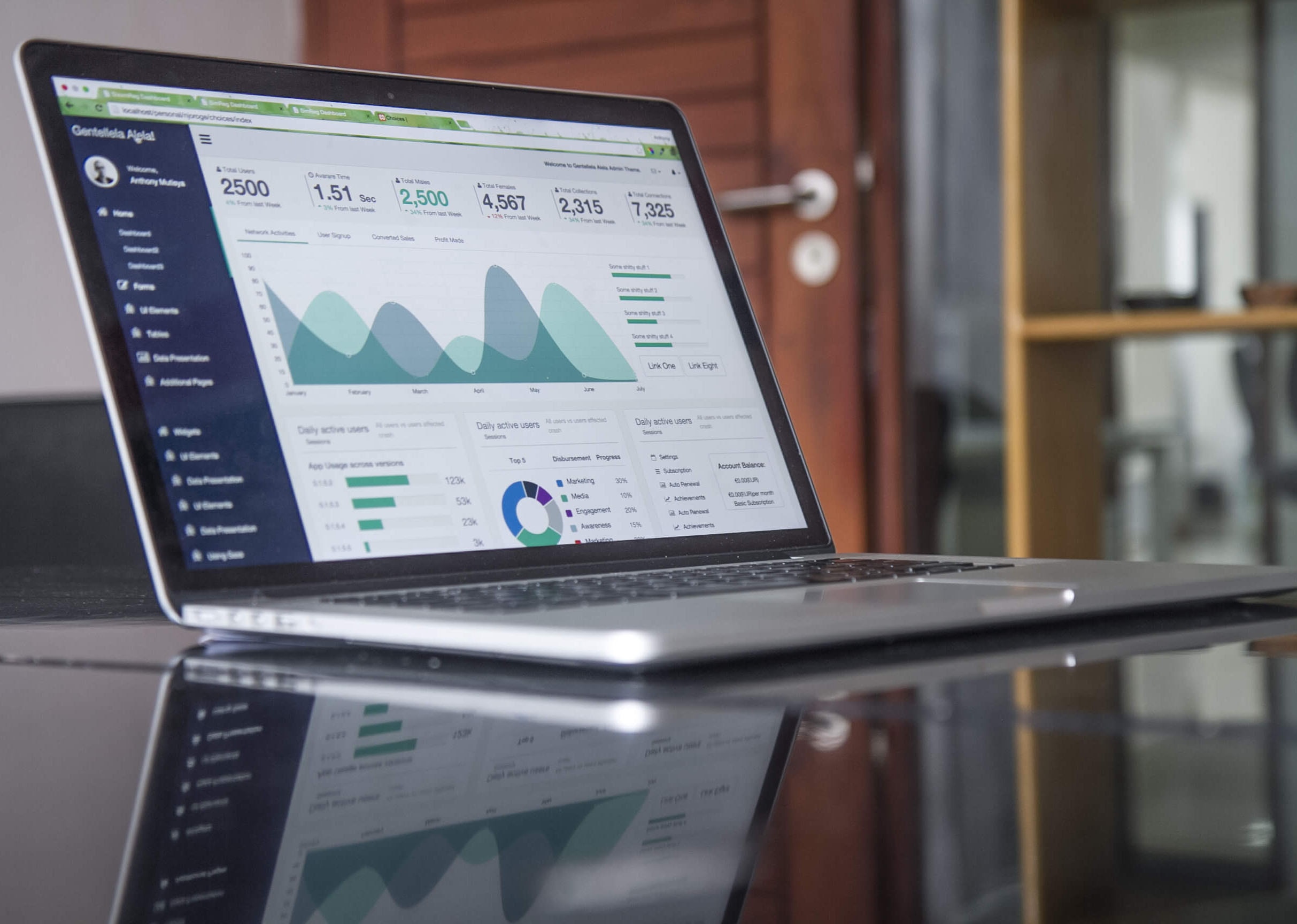In 2019, 73% of internet using households were significantly concerned with online privacy. This led to 35% holding back from some online activities. (NTIA)
With this in mind, privacy and protecting privacy has been on the agenda for many tech companies. The Apple IOS14.5 update has been the most talked about and publicized of initiatives over the past 2 years and Android and Google are now also putting plans into place to limit cookie usage if they haven’t already done so. This means that marketers could be looking at up to 55% of traffic becoming untrackable. (Statista)
If we marry the IOS14.5 update with Google’s plan to phase our 3rd party cookies by 2024, there has never been a better time to rethink and optimize your 1st party data infrastructure. The sooner brands can begin to collect 1st party data, the better.
How can brands collect 1st Party Data?
To keep things simple, we’ve outlined 2 ways to collect 1st party data, each to serve a separate purpose. But both should work together in order to form a coherent data strategy to ultimately grow revenue over time.
Meta’s conversion API (CAPI).
Is your brand running ads anywhere within the Meta network? Most probably! Is your brand making use of Meta’s CAPI alongside your Meta Pixel within your Google Tag Manager set up? Maybe not.
Here’s how it works and how you can set it up across your site.
How does the Meta CAPI work?
After the iOS14.5 update, if a user does not allow tracking, a browser is no longer able to call a tracking script from a domain different to that of the webpage the user is visiting. By setting up the Conversion API and installing a tracking server on your own domain you can set the tracking script to match that of your website domain. Therefore, allowing data to be collected.
The Meta CAPI creates a connection between your brand’s website data and the Meta System. When setting up a direct integration, you establish a connection between your server (cloud based) and Meta. All the first party data you have been able to collect through your tracking server can then be sent via the CAPI and various Meta Pixel IDs back to your Meta Business Suite for measurement, reporting and optimization of your campaigns.
We don’t want to get too technical but essentially, the Pixel is calling event data from a cloud based server set with a native URL to your brand and sending that back to Meta; rather than the data being called directly from the browser (seen as a third party when selecting cookie preferences).
A larger and more accurate data set allows any algorithm driven campaigns to work harder. And being able to track a higher percentage of traffic means that reporting becomes more accurate and more informed strategic decisions can be made. You can also expect to see a positive difference in your conversion rate and assisted conversion reporting as more data floods your reporting software.
More data = better optimisation = bigger growth.
In 2019, 73% of internet using households were significantly concerned with online privacy. This led to 35% holding back from some online activities. (NTIA)
With this in mind, privacy and protecting privacy has been on the agenda for many tech companies. The Apple IOS14.5 update has been the most talked about and publicized of initiatives over the past 2 years and Android and Google are now also putting plans into place to limit cookie usage if they haven’t already done so. This means that marketers could be looking at up to 55% of traffic becoming untrackable. (Statista)
If we marry the IOS14.5 update with Google’s plan to phase our 3rd party cookies by 2024, there has never been a better time to rethink and optimize your 1st party data infrastructure. The sooner brands can begin to collect 1st party data, the better.
How can brands collect 1st Party Data?
To keep things simple, we’ve outlined 2 ways to collect 1st party data, each to serve a separate purpose. But both should work together in order to form a coherent data strategy to ultimately grow revenue over time.
Meta’s conversion API (CAPI).
Is your brand running ads anywhere within the Meta network? Most probably! Is your brand making use of Meta’s CAPI alongside your Meta Pixel within your Google Tag Manager set up? Maybe not.
Here’s how it works and how you can set it up across your site.
How does the Meta CAPI work?
After the iOS14.5 update, if a user does not allow tracking, a browser is no longer able to call a tracking script from a domain different to that of the webpage the user is visiting. By setting up the Conversion API and installing a tracking server on your own domain you can set the tracking script to match that of your website domain. Therefore, allowing data to be collected.
The Meta CAPI creates a connection between your brand’s website data and the Meta System. When setting up a direct integration, you establish a connection between your server (cloud based) and Meta. All the first party data you have been able to collect through your tracking server can then be sent via the CAPI and various Meta Pixel IDs back to your Meta Business Suite for measurement, reporting and optimization of your campaigns.
We don’t want to get too technical but essentially, the Pixel is calling event data from a cloud based server set with a native URL to your brand and sending that back to Meta; rather than the data being called directly from the browser (seen as a third party when selecting cookie preferences).
A larger and more accurate data set allows any algorithm driven campaigns to work harder. And being able to track a higher percentage of traffic means that reporting becomes more accurate and more informed strategic decisions can be made. You can also expect to see a positive difference in your conversion rate and assisted conversion reporting as more data floods your reporting software.
More data = better optimisation = bigger growth.
Install your CAPI with Google Tag Manager (GTM).
If you are using an ecommerce platform like Shopify or Woocommerce, there are native plugins which allow your site to connect directly to the Meta CAPI.
For a full guide on how to implement your CAPI visit Meta for Developers. And if you’d like our help in getting you set up please get in touch.
Log in > Checkout as Guest.
You want to be encouraging your customers to log into your brand’s site rather than browsing and checking out as a guest. Having a database of your existing and (hopefully) growing audience along with a few of their attributes, allows you to better understand purchase habits, spending cycles and calculating CAC/LTV over time.
Uploading 1st party data into your ad platforms like Google Ads and Meta Business Suite as audience lists also enables you to better configure lookalike and custom audiences for your campaigns. The more 1st party data you can provide the platform, the harder the relevant algorithm can work to push your campaigns to new consumers.
But you need to give consumers a reason to sign up. Their data has value so you should be providing value back.
Try:
Giving registered consumers early access to new products or launches
Discount codes on sign up or exclusive promotions
Community benefits like members areas/forums
Personalised communications
Chances to feature on company social accounts
Without collecting 1st party, brands can be at risk of optimizing in the dark and making important and strategic decision on just a small percentage of their audience.
The results?
Meta have released an abundance of data and case studies showing positive results from implementing their CAPI. You can read Hyundai's case study here.
We all know the key to growth is really knowing your audience and being able to appeal to them in a way that no other competitor can. That becomes very hard when you can’t see what they're doing!





